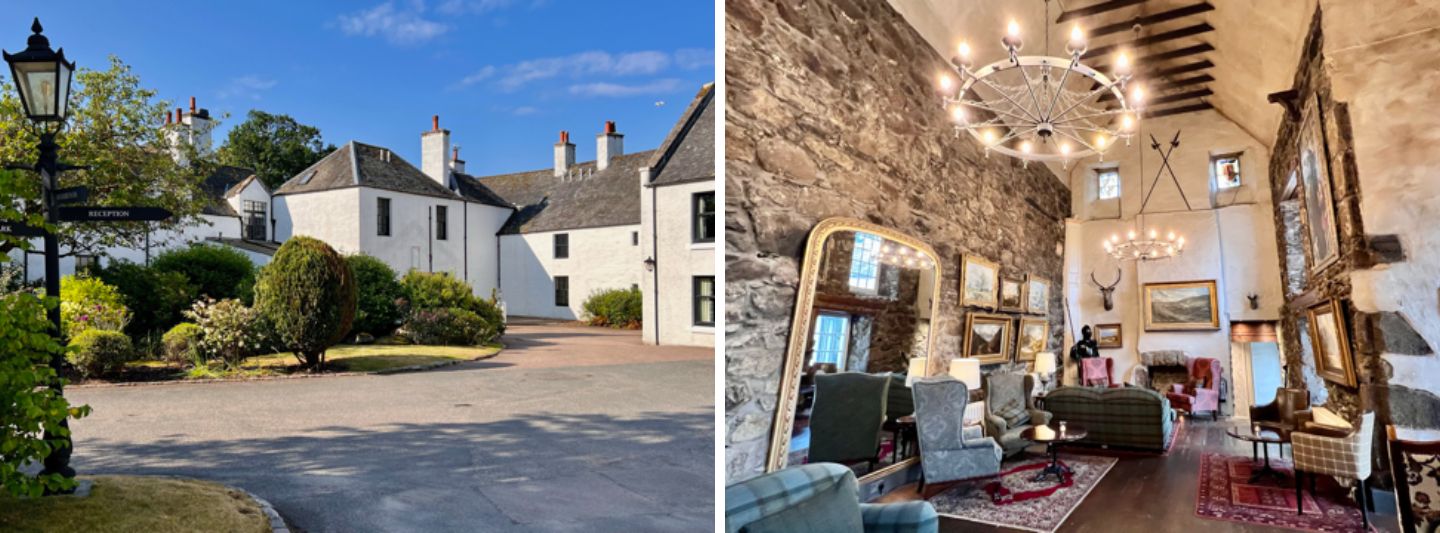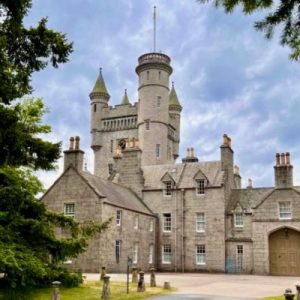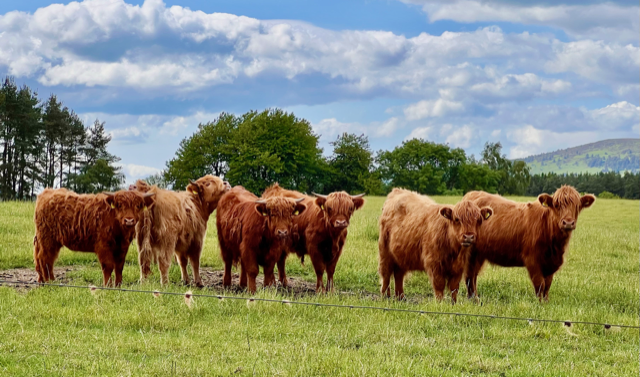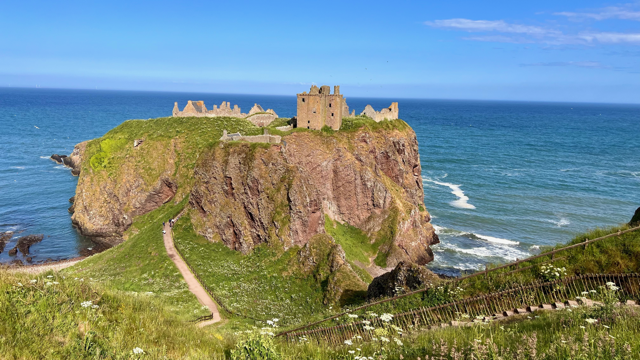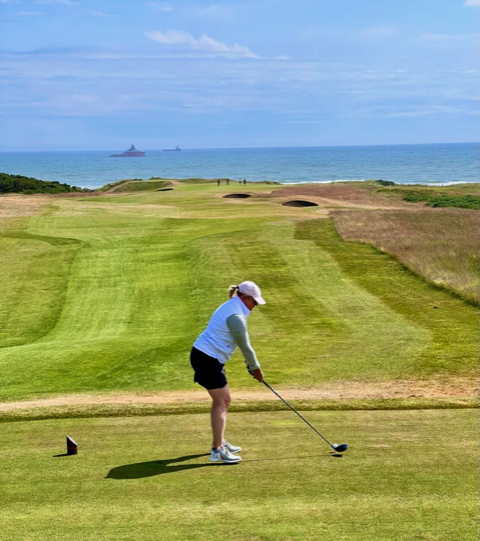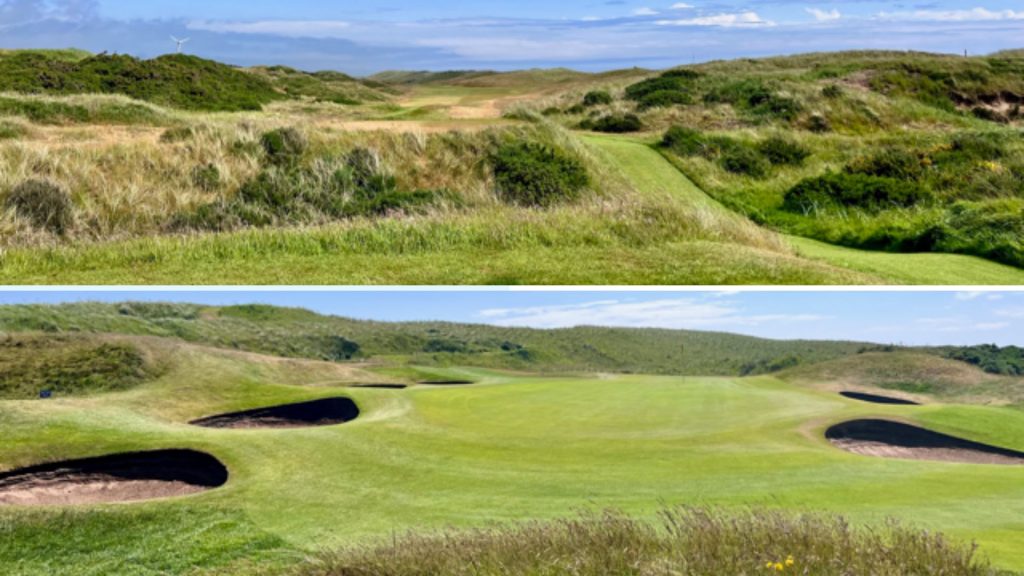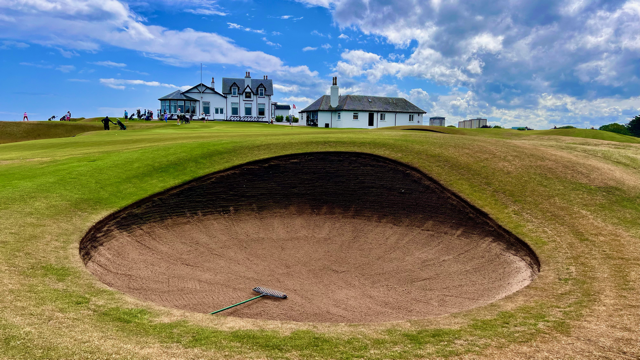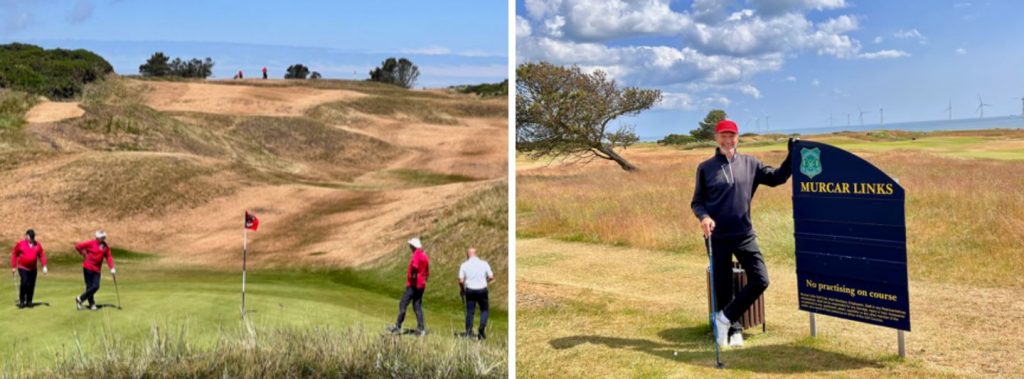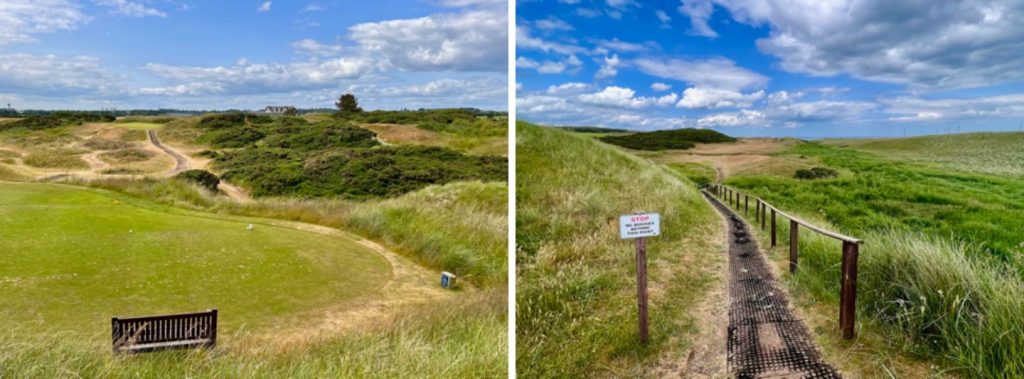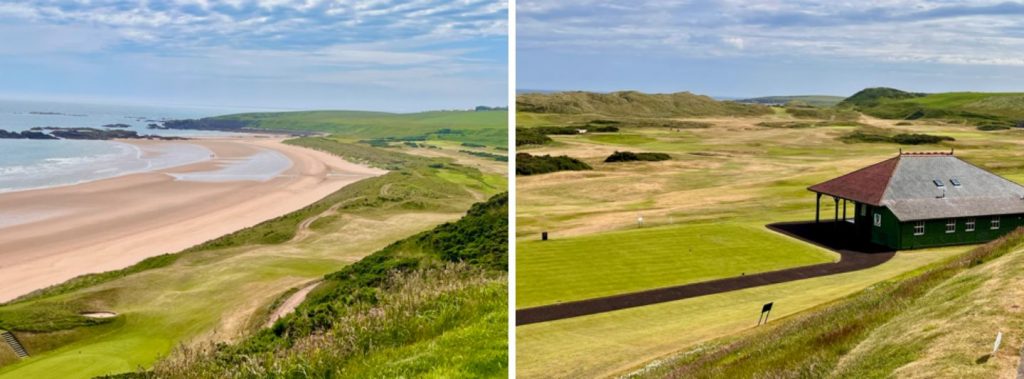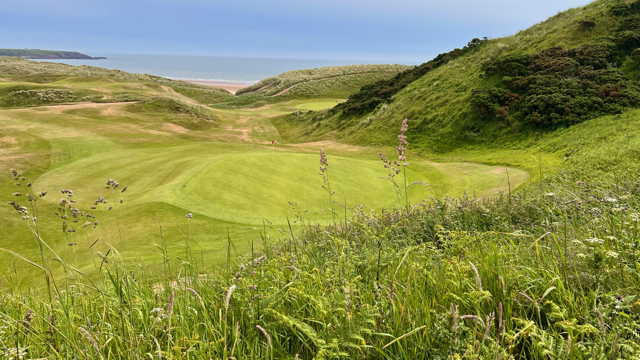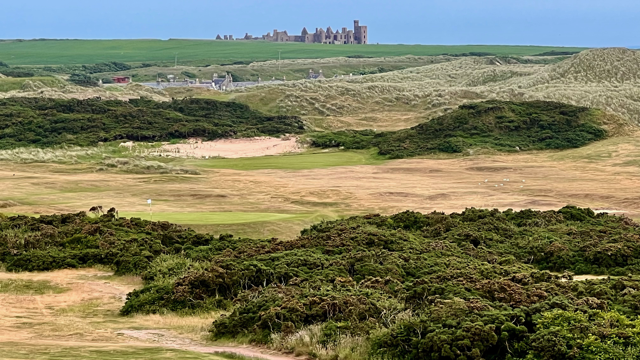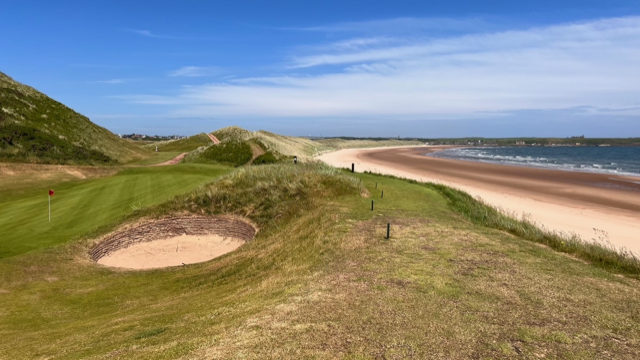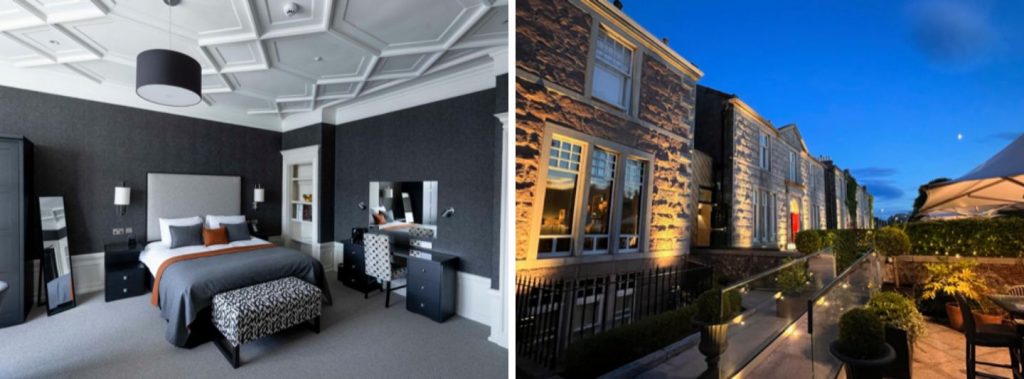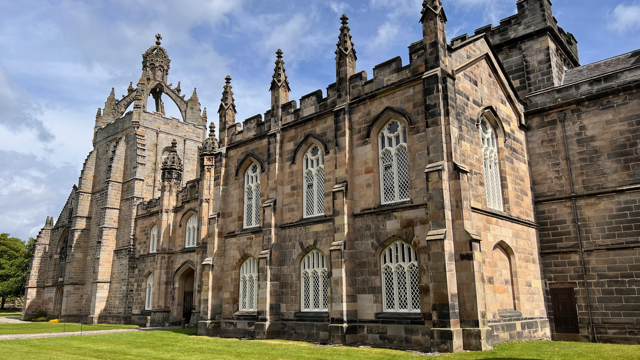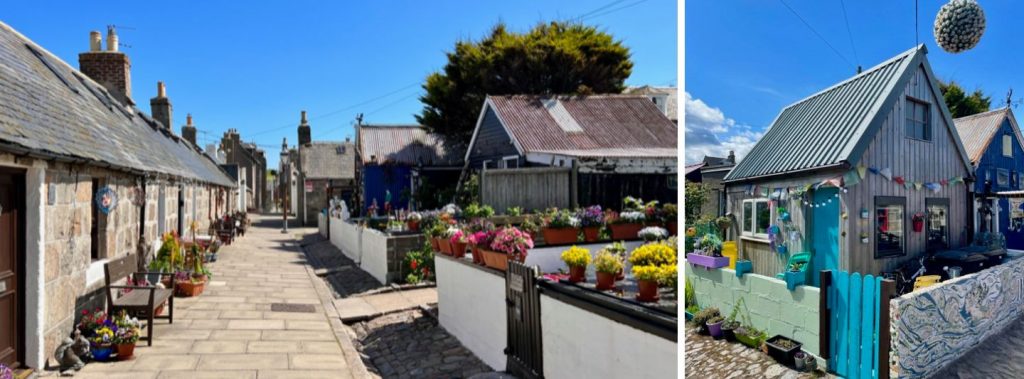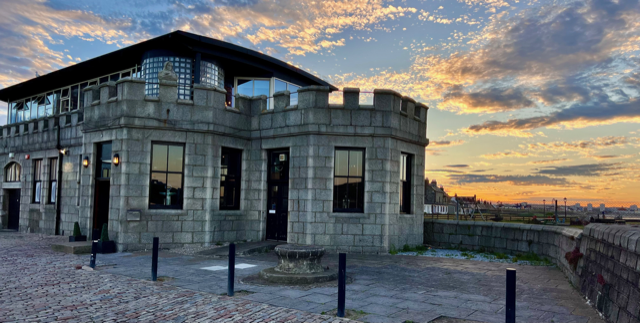In his report, Juergen Linnenbuerger, introduces the impressive newcomer to the Heritage Golf Club and the Heritage Le Telfair Golf & Wellness Resort, which leaves nothing to be desired.
Golfing in paradise
Officially, the brand new La Réserve Golf Links, the 11th golf course on the island, will not open until December 2023 so I am all the more excited when we are invited to play the course during the soft opening in October.
I am extremely curious to see whether it will live up to the great praise with which it has been showered by experts and the golf media. Already it is considered one of the best new golf courses in the world. Have the South African golf pro and The Open Champion, Louis Oosthuizen, and his compatriot, the well-known golf course architect, Peter Matkovich, really created something extraordinary?
Anticipation and excitement mount
On the non-stop flight from Frankfurt/Main to the east coast of the island, I ask myself what I can expect from the links golf course in the tropical paradise.
But the reflection doesn’t last long, because I quickly fall asleep after the delicious meal in the almost two-metre-long, completely flat prime seat, of which there are only four! They are arranged in a 1-2-1 configuration and located in the front row of Condor Business Class. Their spaciousness exceeds that of the other seats in this class, especially in the foot area. You can even sit two to a seat opposite each other.
Without a doubt, they are the highlight of the airline’s new aircraft, the A330-900neo. Its two-tone striped livery reminds us of candy canes. Ours is coloured in white and green and conveys a joyful vacation mood as soon as we board.
The friendly crew impresses us with their perfect service. Entertainment is also writ large; we can watch movies in cinema quality on the 4K screen with a diagonal of 61 cm whilst a range of additional services perfectly rounds off the positive flight experience. The 11.5 hours literally fly by.
The resort shuttle takes us to Bel Ombre on the picturesque southwest side of the island in just over an hour. The 2,500-hectare Heritage Golf & Wellness Resort, located directly on the sea, includes two five-star luxury hotels, Le Telfair and Awali, as well as two impressive championship golf courses.

We were lucky enough to get to know the Le Château Course, the first course of the Heritage Golf Club, back in 2019. I present the course, which on several occasions has been declared the best golf course in the Indian Ocean.s
Pure golfing drama
It takes us less than 15 minutes by golf buggy from the clubhouse of Le Château Course to the first tee of the new La Réserve Golf Links. This is located at the highest point of the course, about 180 m above sea level where it is cooler and windier than in the resort. From there, the course descends over three plateaus at different heights until you reach the last hole.
The moment we step onto the first tee, we are struck by the wow factor which lasts until the final putt. From each of the holes, we gaze out over the deep blue Indian Ocean in the distance. Strikingly, the course is completely open, with a few trees only present between the eighth and ninth hole.
Right from the start, full concentration is required. The tee shot on the first hole has to be hit into the sideways sloping fairway into a strong wind with the rough waiting on the right and two hillsbguarding the green. How do we tackle that?

This question arises not only on every hole, but on every shot as each hole is different and extremely challenging. When choosing a club, less is more. Irons instead of the driver are often the better solution especially on the second hole, which runs straight but extremely narrow between dunes.

The third continues the series of impressive holes on the front nine with a dramatic precipice on the right that has a magical attraction. If you hit the landing zone on the plateau, all is well with the world, but you first have to get there against the prevailing wind. More golfing drama at the beginning of a round is hardly possible.

We pause to enjoy the great routing of the course and its magnificent views. The deep green of the fairways, the blue sea sparkling in the background with the brilliant white clouds above it and the white-yellow sand of the bunkers combine to form a colour composition that will delight golf course aesthetes. Added to this is the dark green Savanna Mountain Range that acts as a backdrop to the course and the adjacent nature reserve, which make the picture perfect.
The following par 3 requires a precise tee shot into the humpy green. If not successful, your ball can quickly end up out of bounds or in one of the pot bunkers. However, the magnificent view of the Baie du Jacotet with the snow-white crests of the rolling waves compensates for any inability to land the ball safely on the green.

At the fifth hole, my adrenaline is pumping because the tee shot has to be played 60m deep over a ravine into the fairway. I get just over it and my pulse begins to calm down again.

The lake, which is atypical for links courses, comes into play at six and seven (it serves to irrigate the course) and here too, there is the threat of losing your ball. At the imposing eighth, you have a couple of opportunities to land the ball on the split fairway.

From the beginning of the back nine the wind dies down after a beast of a front nine and the course develops into a friendly creature that allows itself to be stroked, becomes more likeable from hole to hole. We start to like it.
The 11th, the longest of the five par 3s, is the signature hole which, with the bay behind it, is both a playing and a visual highlight of the course.

By the 13th hole, the course has finally taken my heart, as I manage not to hit the bunker on the huge green and make a birdie. If the flag is placed closer to it, the bunker definitely comes into play.

The native grasses swaying in the wind in the dense rough along the fairways on the following holes appear to have been painted onto the landscape and are a feast for the eyes. They will remain in our memories, as will the 18th hole, where a highly-playable green makes for a worthy conclusion to this spectacular course.

This jewel of a golf course, integrated into former sugar cane fields, was created in harmony with the existing nature and is located in the vicinity of a UNESCO biosphere reserve. The course meets the standards required for GEO certification and thus sets an international standard for the construction of sustainable golf courses.
The irrigation system is state-of-the-art and allows targeted control of water use whilst the paspalum grass used on the whole course is robust and resistant to heat, which helps to save water.
Sporty and challenging
In the future, the challenging course will have six different tees. Due to its sporting challenges, the HCP limit will be 36.
Golf professionals will put their skills to the test for the first time on the par 72, 6,727m course from 14-17 December 2023, as participants from not one but two internationally-recognised tours battle it out for victory. As host of the AfrAsia Bank Mauritius Open, Oosthuizen will welcome professionals from the DP World Tour 2024 and the South African Sunshine Tour to La Réserve Golf Links. We are already looking forward to watching this event on TV.
Exclusive access
The club management is limiting numbers to 60 tee times per day, allowing starts to flow at relaxed 15 minute intervals. La Réserve is exclusively available to the approximately 180 members of the Heritage Golf Club as well as the guests of the resort’s two five-star hotels, as well as those staying in the resort villas and in the Château’s private suites.
The Le Château Course and the 9-hole Academy Course are still open to green fee players. Guests of the Heritage Resort play here free of charge. With the new course, the resort now establishes itself as the only 45-hole facility on the island and shines with a new star on the global golf map.
Jonathan Menteath, General Manager of the Heritage Golf Club, is confident that La Réserve Links has the potential to be ranked among the top 100 golf courses in the world. The new course is expected to attract more guests to consciously travel to Mauritius to play golf. At the moment, the type of group that predominates here are those looking for a beach and wellness vacation combined with a few rounds of golf still.

All-round comfort and enjoyment at Heritage Le Telfair Golf & Wellness Resort
We stay in the exclusive Heritage Le Telfair Golf & Wellness Resort, a member of the Small Luxury Hotels of the World, which is designed in an elegant colonial style.
The two-storey villas with 158 suites are located in a very well-kept tropical park. The brilliant white of the buildings shimmer through the otherwise dominant green of the densely overgrown grounds whilst tall palms and trees provide ample shade.

The tastefully-furnished rooms are equipped with classic as well as modern elements. Our Junior Suite Garden View with large terrace impresses us with its super comfortable bed and bathroom with free-standing bathtub.

The beach, which is not very wide, is clean and fringed by tropical palms. The ocean water shines blue and is crystal clear. Its lateral current acts like a counter-current, making swimming on the spot in the ocean an interesting experience. Further out, the metre-high waves break on a coral reef.

Those who prefer relaxing by the pool will find various options alongside the various water sports that are available at the C Beach Club.

Gastronomically, 13 restaurants and bars offer great variety both in terms of cuisine and ambience. From sitting barefoot in the sand at Le Palmerie to fine dining in a refined atmosphere at Le Château de Bel Ombre – there is something for every guest. We enjoy the delicious food and fine wines everywhere.
Extensive and high-quality wellness offers complement the resort’s feelgood program. The multi-award-winning Seven Colours Spa & Wellness is one of the leading ones in the southern Indian Ocean region. After the neck and back massage we feel deeply relaxed.
In harmony with nature
Environmental protection and sustainability are writ large at the resort, recycling management and waste avoidance are successfully practised, and plastic is avoided as much as possible. One example of this is the water bottles used, which are made from sugar cane and returned to the organic cycle after use.
Always a smile at the ready
Throughout the resort, the employées appear with great cheerfulness and helpfulness. They captivate us with their always warm smiles and read our every wish from our lips.
Everything at its best
We can add absolutely nothing to the frequently used positive cliché about a perfect vacation in paradise. Everything is just right in the entire resort and on the great golf courses. For us, a golf vacation could not be more beautiful, well-appointed and stylish.











